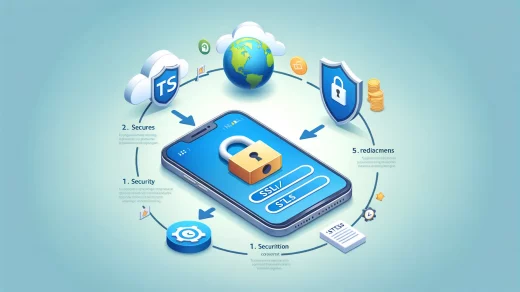In the modern digital landscape, parenting has evolved beyond bedtime stories and curfews. Yes, kids are increasingly aware of hacks like how to fake location on Find My iPhone—a trend that highlights the urgent need for tech-savvy, security-conscious parenting. The challenge for modern families is finding that sweet spot: allowing children to explore the benefits of technology while shielding them from its risks.
Let’s see how to use technology wisely in your parenting habits. For sure, it can help you, not just bring new challenges.

🧠 Step 1: Establish Clear Boundaries and Screen Time Limits
Children thrive in structured environments, and the digital world is no different. Setting screen time limits is not just about reducing exposure but about promoting a healthy balance between online and offline life. The American Academy of Pediatrics recommends:
| Age Group | Daily Screen Time Recommendation |
| 2 to 5 years | Up to 1 hour of high-quality content |
| 6 to 12 years | Consistent limits based on family rules |
| 13+ years | Encouraged self-regulation and parental guidance |
Tips to Create Effective Digital Rules:
- Introduce “tech-free zones” like the dinner table and bedrooms.
- Designate daily screen-free hours to encourage outdoor play or reading.
- Use a screen time chart or app to track usage and reinforce consistency.
- Link digital privileges to positive behavior and responsibilities.
💡 Pro Tip: Pair screen time with activity time. For every 30 minutes of digital use, encourage 30 minutes of physical or creative activity.
🛡️ Step 2: Teach Online Safety from an Early Age
One of the most effective protections is knowledge. Empowering children with a clear understanding of online risks builds resilience and critical thinking. This includes:
- Never sharing personal information like address, school name, or phone number.
- Being cautious about messages from unknown people—even if they sound friendly.
- Understanding what constitutes cyberbullying and how to report it.
Create a Digital Safety Pledge Together:
Develop a family tech contract that outlines do’s and don’ts. Here’s an example:
| Rule | Explanation |
| Never meet online contacts | Always inform a parent before considering it |
| Use nicknames on public sites | Avoid sharing full name or photos |
| Ask before downloading apps | Helps parents assess safety and permissions |
| Talk openly about experiences | Encourages trust and support when something feels off |
🔐 Conversation starters to keep dialogue open:
- “What was the most interesting thing you saw online today?”
- “Did you see anything confusing or weird?”
- “If someone said something that made you uncomfortable, what would you do?”
🧰 Step 3: Use Built-In Parental Controls & Third-Party Tools
Modern technology doesn’t just create risks—it offers solutions too. Built-in controls and third-party apps allow parents to monitor usage, restrict harmful content, and receive alerts if concerning behavior is detected.
Popular Built-In Controls:
- iOS Screen Time: Set daily limits for specific apps or categories.
- Google Family Link: Manage Android device usage and approve downloads.
- Windows/Mac Parental Controls: Block websites, limit time, and control access by user profile.
🔧 Top-Rated Parental Control Apps:
Here’s a comparison of the most trusted apps:
| App Name | Key Features | Best For |
| Bark | Social media & text monitoring, alerts for risks | Teens with active social profiles |
| Qustodio | Time limits, web filtering, geofencing | Cross-platform families |
| Aura | AI-driven screen habits, cybersecurity tools | Families using multiple devices at home |
Each of these tools offers customization, letting you adjust protection based on the child’s age and maturity. Many also send weekly reports, helping parents spot trends and potential concerns early.
🎯 Focus Point: Don’t rely solely on blocking features. Use these tools as conversation starters. Ask your child why they enjoy certain apps or sites and discuss how to use them wisely.
📍 Step 4: Leverage Location Tracking for Peace of Mind
Real-time GPS tracking has transformed from a corporate asset to a parenting necessity. Whether your child is walking home from school or attending a friend’s birthday party, location-tracking tools offer reassurance without the need for constant check-ins or overbearing behavior.
🔎 Enter: Number Tracker
This user-friendly app allows parents to track a child’s phone by number—no complicated setup, no invasive access to the device. Key features include:
| Feature | Description |
| Real-Time GPS Tracking | Know where your child is, instantly. |
| Location History | Review where they’ve been throughout the day or week. |
| Geofencing | Set safe zones (like school or home) and get alerts when they exit or enter. |
| Private Circles | Share location only with trusted family members—no public sharing. |
| Route Planning | Coordinate drop-offs and meet-ups efficiently, minimizing stress. |
🧭 Why It Works:
Instead of asking “Where are you?” ten times a day, Number Tracker provides a non-intrusive way to ensure your child’s safety. It balances autonomy and oversight—a key component of modern parenting.
👨👩👧 Scenario Example:
Your teen takes public transit. By checking the app, you see they’re already near their stop. You prepare to pick them up without needing to text mid-commute. Trust is maintained, safety is ensured, and independence is respected.

👨🏫 Step 5: Model Responsible Technology Use
Children mirror what they see—not just what they’re told. One of the most overlooked but powerful strategies in digital parenting is modeling healthy digital behavior.
What Modeling Good Tech Use Looks Like:
- No phones during meals or family conversations.
- Avoid multitasking with devices when your child seeks attention.
- Keep your own screen time in check, especially before bed.
- Talk about your own use of security tools, privacy settings, and digital hygiene.
📱 Mini-Challenge:
Have a “digital sabbath” once a week—an hour (or more) when the entire family unplugs. Use this time to bond through games, nature walks, or storytelling. This shared ritual builds trust and re-establishes offline connections.
👀 Why It Matters:
When children see adults handling tech responsibly, they internalize those behaviors as norms. If they see you avoid oversharing on social media or pause to verify sources before clicking links, they’re more likely to do the same.
🤝 Step 6: Stay Informed and Involved
Technology is a moving target. New platforms emerge, privacy policies change, and digital threats evolve. Parents must remain curious, informed, and engaged—not as surveillance officers, but as trusted guides.
How to Stay Proactively Involved:
| Action | Benefit |
| Explore new apps with your child | Understand how they work and what content they offer |
| Watch trending YouTube/TikTok videos together | Spark discussion on themes, values, and what’s appropriate |
| Join online communities or newsletters for digital parents | Stay updated on risks, scams, and solutions |
| Talk regularly about digital life | Normalize these conversations so your child feels safe opening up |
💬 Suggested Questions to Ask:
- “What’s one app you think I should try, and why?”
- “Have you ever seen a weird message or ad online? What did you do?”
- “If a friend was being bullied online, how would you help them?”
🧰 Recommended Resources and Tools for Parents
Choosing the right tools can make a significant difference in how effectively you can protect your child online. Below is a curated list of top-rated apps that offer practical features for digital safety, screen management, content monitoring, and more.
🔍 1. Number Tracker
A standout app for real-time location tracking using just a phone number.
| Feature | Benefit |
| GPS-Based Tracking | Instantly locate your child without needing to call or text. |
| Location History | Know where your child has been during the day or week. |
| Geofencing Alerts | Get notified when your child enters or leaves a set location. |
| Private Circles | Only share data with selected family members. |
| Route Planning | Coordinate meetups and errands safely and efficiently. |
🎯 Why Parents Love It:
Number Tracker respects both privacy and safety. It’s intuitive and doesn’t feel like surveillance—it feels like support.
🧠 2. Bark Parental Control
A comprehensive digital watchdog designed for families with kids who actively use social media, YouTube, messaging, and more.
| Feature | Description |
| Content Monitoring | Scans texts, emails, and 30+ platforms for risks. |
| Alerts for Inappropriate Behavior | Notifies parents of cyberbullying, sexting, or risky topics. |
| Expert Advice | Offers guidance on how to talk about flagged issues. |
💬 Use Case:
Your teen uses Snapchat frequently. Bark scans activity and sends an alert if harmful language or themes are detected, helping you step in when truly needed.
🛡️ 3. Aura Parental Control
Designed for digital safety across devices, Aura combines parental controls with robust cybersecurity tools.
| Feature | Description |
| Multi-Device Monitoring | Covers phones, tablets, and computers (iOS, Android, macOS). |
| Content Blocking | Filters harmful or inappropriate content in real time. |
| AI Recommendations | Suggests screen time limits based on your child’s habits. |
👪 Best For:
Families that rely on multiple types of devices and want unified oversight.
🌍 4. Qustodio
Known for its ease of use and excellent reporting, Qustodio excels in giving a full picture of your child’s digital behavior.
| Feature | Description |
| Time Limits & Scheduling | Helps create structured routines for device use. |
| Detailed Reports | See which apps/sites are used and for how long. |
| Panic Button | Allows a child to send a quick distress alert to parents. |
🧭 Why It’s Useful:
For younger children or preteens starting to use the web, Qustodio creates a safety net with alerts and quick communication features.
Let technology work with you, not against you. Because parenting in the digital age is no longer just about “keeping them safe”—it’s about helping them thrive.





